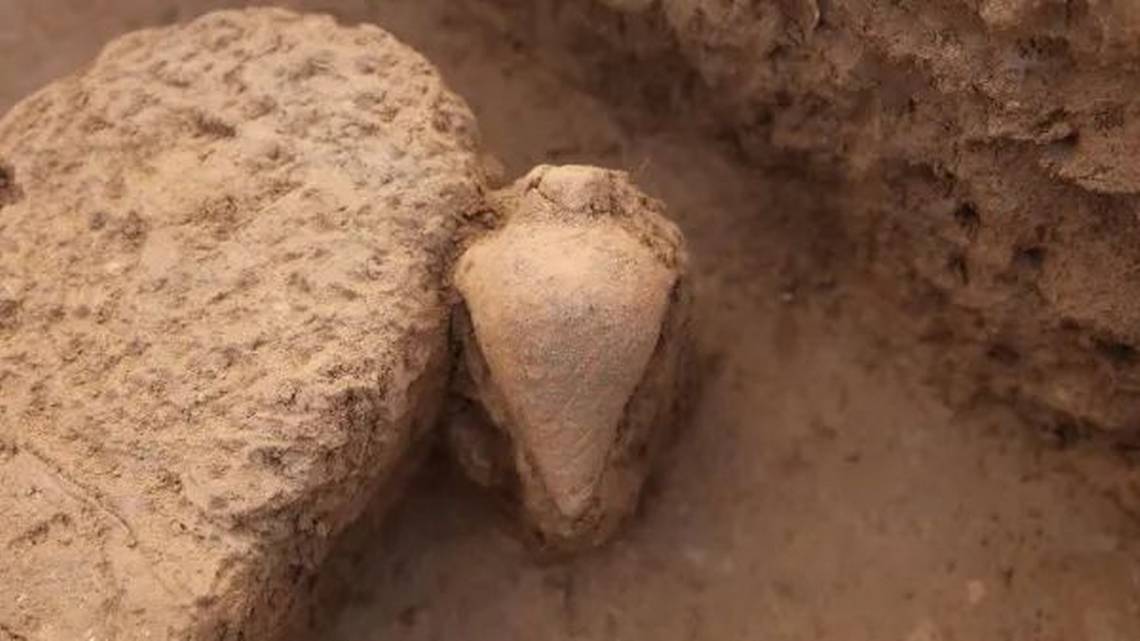Archaeologists in Henan province excavated an ancient tomb and discovered a “rare” 7,000-year-old bottle with a mysterious purpose, pictures show.
Photos from Institute of Archeology, Chinese Academy of Social Sciences and China Archaeological Network
Buried in an ancient tomb in China sat a small, distinctly shaped bottle. The 7,000-year-old bottle might look simple, but it held a mystery.
[–>
Archaeologists uncovered the bottle while excavating a tomb in the Peiligang site, according to a Dec. 25 news release from the Institute of Archaeology at the Chinese Academy of Social Sciences and the China Archaeology Network.
[–>
The roughly 4-inch-long bottle has a small mouth at the top and pointed end at the bottom, the release said. A photo shows the almost teardrop-shaped bottle.
[–>
Similarly shaped bottles have been found before and are considered a representative artifact of the prehistoric Yangshao culture. These pottery pieces have been found in houses, ash pits and tombs — but their purpose is a source of debate.
[–>
Archaeologists believe these ancient bottles might have been used as water carriers, during brewing and winemaking, or for burials.
[–>
The “rare” bottle found at the Peiligang site is unique because of its abnormally small size and its age, according to an article from the People’s Daily Online, a Chinese government-run news outlet. Researchers initially estimated the bottle to be about 7,700 years old, the “earliest dated artifact of its kind in China.”
[–>
The Peiligang site is considered “one of the birthplaces of Chinese agricultural civilization,” the People’s Daily Online reported. The settlement is between 7,600 and 8,000 years old.
[–>
Archaeologists also found stone relics, fragments of ostrich eggs and other artifacts at the site, the release said. Excavations are ongoing.
[–>
The Peiligang site is in Xinzheng, Henan Province, and about 410 miles southwest of Beijing.
[–>
Google Translate and Baidu Translate were used to translate the news release from the Institute of Archaeology at the Chinese Academy of Social Sciences and the China Archaeology Network.
[–>[–>[–>


